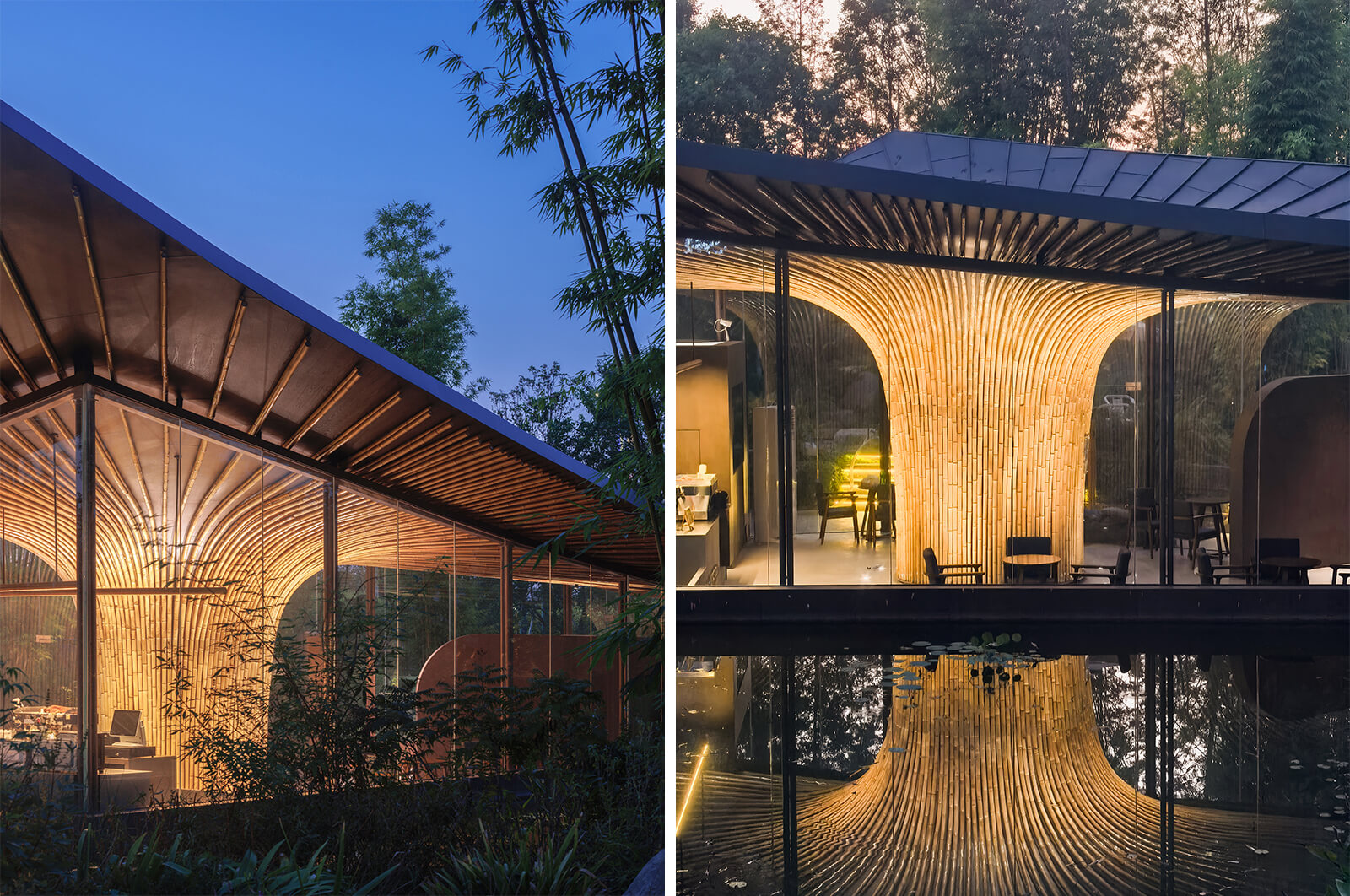 The Xingcheng Exhibition Garden was designed for the 2024 Chengdu International Horticultural Expo in China. Shaped by Chengdu’s traditional aesthetics, the garden pavilion offers tranquillity amid nature. The pavilion emphasizes sustainable design through its use of low-carbon materials that align with the Expo’s green ethos.
The Xingcheng Exhibition Garden was designed for the 2024 Chengdu International Horticultural Expo in China. Shaped by Chengdu’s traditional aesthetics, the garden pavilion offers tranquillity amid nature. The pavilion emphasizes sustainable design through its use of low-carbon materials that align with the Expo’s green ethos.
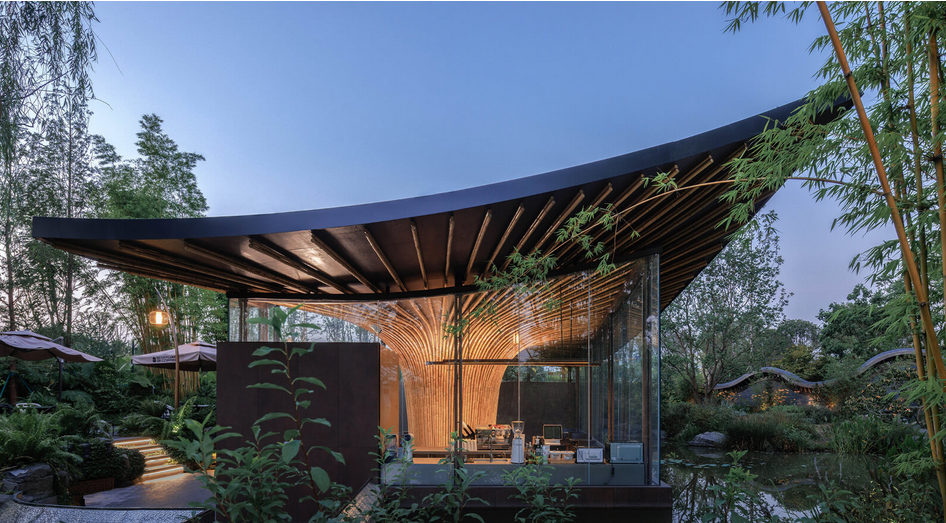 Principal architect Youcai Pan says, “We hoped to foster a space that honors the contemplative beauty of the natural world, where architecture acts not as a showpiece but as an inseparable extension of its surroundings.”
Principal architect Youcai Pan says, “We hoped to foster a space that honors the contemplative beauty of the natural world, where architecture acts not as a showpiece but as an inseparable extension of its surroundings.”
 The entrance is marked by a ‘Dragon Gate’, a structure modeled to appear like a well-worn book opening to welcome visitors. It invites guests into a lush sanctuary, with paths winding through bamboo clusters and shaded by overarching lotus leaves, each intentionally designed to channel the spiritual significance of traditional Sichuan gardens.
The entrance is marked by a ‘Dragon Gate’, a structure modeled to appear like a well-worn book opening to welcome visitors. It invites guests into a lush sanctuary, with paths winding through bamboo clusters and shaded by overarching lotus leaves, each intentionally designed to channel the spiritual significance of traditional Sichuan gardens.
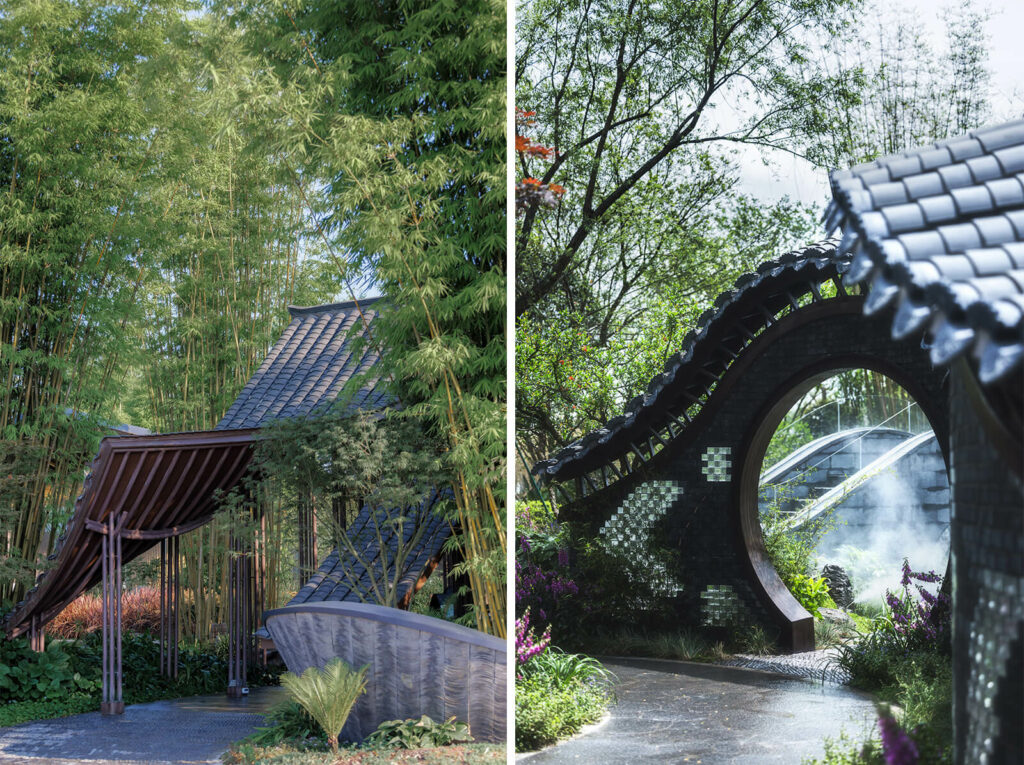 In Chengdu, bamboo and lotus ponds are symbolic features, representing resilience and grace across classical gardens. The architects used the imagery of ‘Lotus Leaves Standing Gracefully’ in crafting an architectural lotus leaf canopy.
In Chengdu, bamboo and lotus ponds are symbolic features, representing resilience and grace across classical gardens. The architects used the imagery of ‘Lotus Leaves Standing Gracefully’ in crafting an architectural lotus leaf canopy.
 Beneath this oversized leaf grows a bamboo grove—poles extending outward as veins of the lotus plant, connecting and grounding the design.
Beneath this oversized leaf grows a bamboo grove—poles extending outward as veins of the lotus plant, connecting and grounding the design.
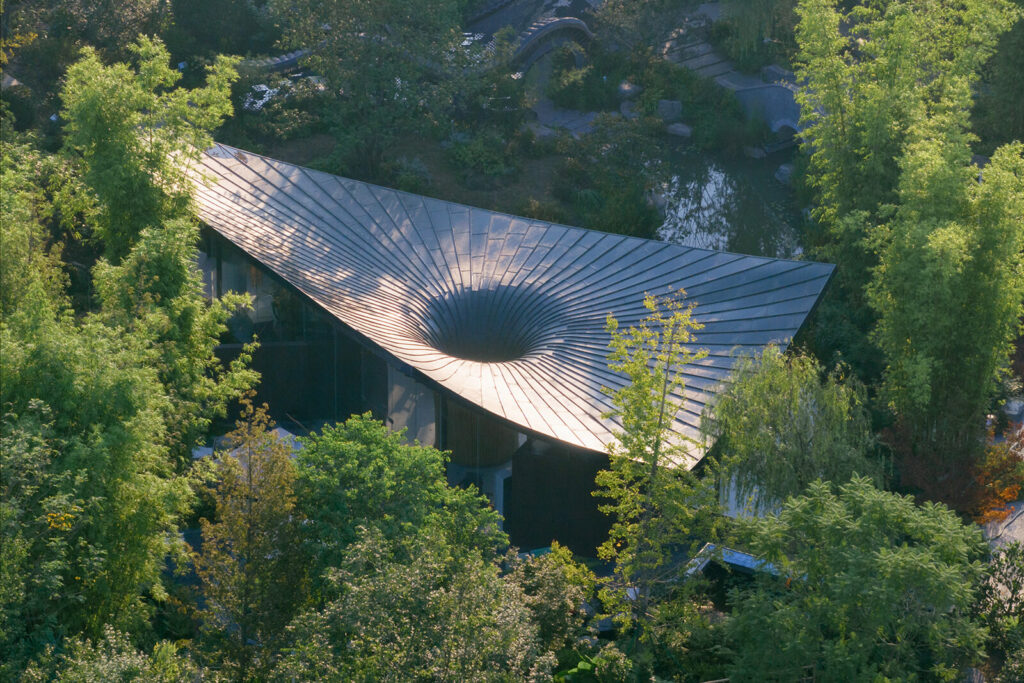 One of the most distinctive features is its integrated rainwater collection system. With its hollowed core, the salient lotus-leaf roof channels rainwater towards a central pond, accumulating rainfall to create a reflective pool.
One of the most distinctive features is its integrated rainwater collection system. With its hollowed core, the salient lotus-leaf roof channels rainwater towards a central pond, accumulating rainfall to create a reflective pool.
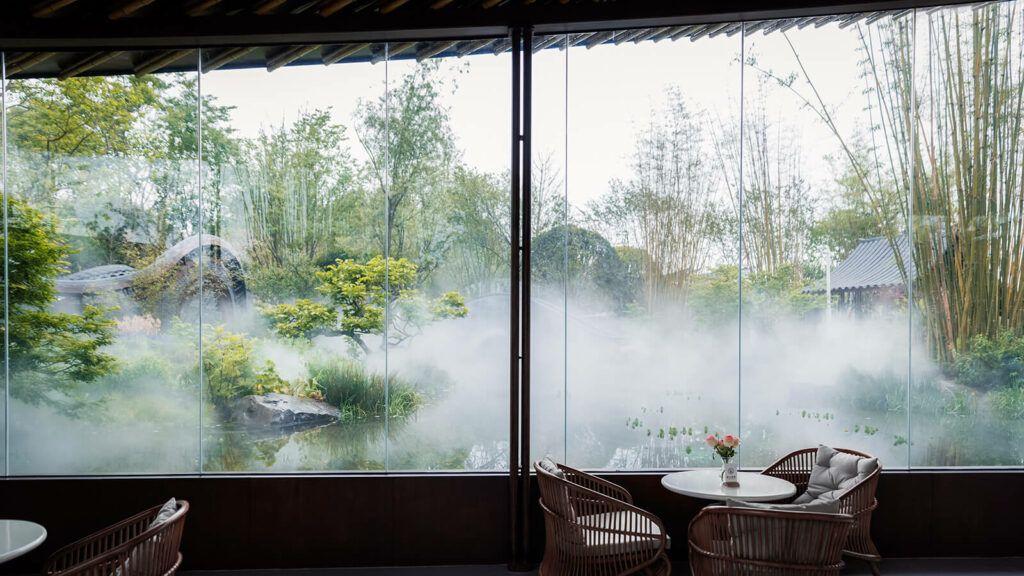 The outer walls of the main building are clad in ultra-white, floor-to-ceiling glass that dissolves the boundaries between the structure and the exhibition garden.
The outer walls of the main building are clad in ultra-white, floor-to-ceiling glass that dissolves the boundaries between the structure and the exhibition garden.
 The roof incorporates recyclable steel and raw bamboo. Local straw bricks and rattan furniture dress the interior.
The roof incorporates recyclable steel and raw bamboo. Local straw bricks and rattan furniture dress the interior.
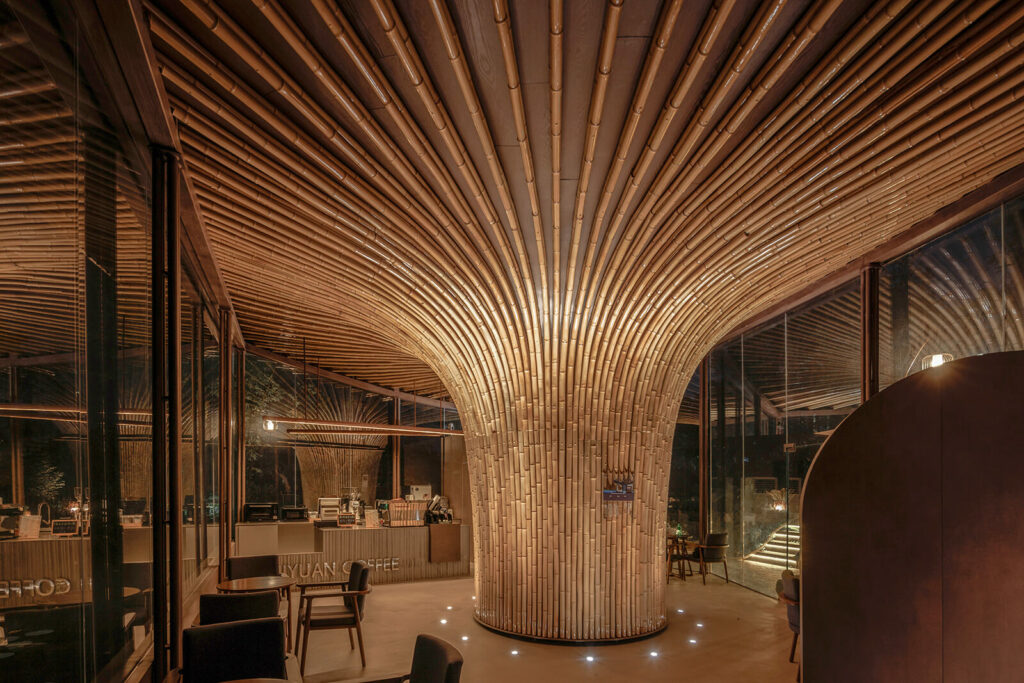 The Xingcheng Garden is a contemporary architecture rooted in age-old philosophies of balance and harmony with nature. Pan and his team have crafted a pavilion that stands as a testament to the enduring resonance of Sichuan’s landscape, inspiring future dialogues on sustainable architecture within urban contexts.
The Xingcheng Garden is a contemporary architecture rooted in age-old philosophies of balance and harmony with nature. Pan and his team have crafted a pavilion that stands as a testament to the enduring resonance of Sichuan’s landscape, inspiring future dialogues on sustainable architecture within urban contexts.
You can read the original article at www.stirworld.com

